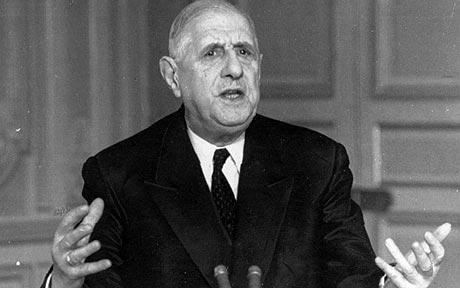Charles De Gaulle
Posted By admin On 15/04/22
Charles de Gaulle (1890-1970) was the dominant military and political leader of France, 1940-1969.He was a conservative in the traditionalist sense, and helped restore the leadership of conservatives and Catholics while weakening the Communists and socialists. Charles de Gaulle is the flagship of the French Navy (Marine Nationale). The ship is the tenth French aircraft carrier, the first French nuclear-powered surface vessel, and the only nuclear-powered carrier completed outside of the United States Navy. She is named after French statesman and general Charles de Gaulle. Charles de Gaulle refitting in the southwestern dock of Vauban industrial zone in 2008. Charles de Gaulle's first major overhaul began in September 2007. The highlight of this 15-month refit was the refueling of the nuclear power plant, a necessary step after six years in service, during which Charles de Gaulle sailed the equivalent of 12 times around the world, spent 900 days at sea,.
Charles de Gaulle ©De Gaulle was a French general and statesman, leader of the Free French during World War Two and the architect of the Fifth Republic. His political ideology, 'Gaullism', has become a major influence in French politics .

Charles de Gaulle was born in Lille on 22 November 1890 and grew up in Paris, where his father was a teacher. De Gaulle chose a military career and served with distinction in World War One.
During the 1930s he wrote books and articles on military subjects, criticising France's reliance on the Maginot Line for defence against Germany and advocating the formation of mechanised armoured columns. His advice went unheeded and, in June 1940, German forces easily overran France. As under-secretary of national defence and war, de Gaulle refused to accept the French government's truce with the Germans and escaped to London, where he announced the formation of a French government in exile. He became leader of the Free French.
After the liberation of Paris in August 1944, de Gaulle was given a hero's welcome in the French capital. As president of the provisional government, he guided France through the writing of the constitution on which the Fourth Republic was based. However, when his desires for a strong presidency were ignored, he resigned. An attempt to transform the political scene with a new party failed, and in 1953 he withdrew into retirement again.
Charles De Gaulle Airport
In 1958, a revolt in French-held Algeria, combined with serious instability within France, destroyed the Fourth Republic. De Gaulle returned to lead France once more. The French people approved a new constitution and voted de Gaulle president of the Fifth Republic. Strongly nationalistic, de Gaulle sought to strengthen his country financially and militarily. He sanctioned the development of nuclear weapons, withdrew France from NATO and vetoed the entry of Britain into the Common Market. He also granted independence to Algeria in the face of strong opposition at home and from French settlers in Algeria.
Charles De Gaulle Definition
In May 1968, violent demonstrations by university students shook de Gaulle's government. A general strike followed, paralysing France and jeopardising the Fifth Republic. De Gaulle held elections and the country rallied to him, ending the crisis. In April 1969, De Gaulle resigned the presidency after losing a referendum on a reform proposal. He retired to his estate at Colombey-les-Deux-Eglises and died of a heart attack on 9 November 1970.